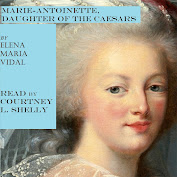From It Can Always Get Worse:
Elizabeth I (r. 1558-1603) sought to compose England, after the rapid alterations in official confession that preceded her, with a compromise that left the Church of England, in the famous phrase, both Catholic (in structure) and Reformed (in theology). Protestantism of a really quite radical Calvinist kind bedded down remarkably quickly as the overwhelming majority religion in a country that had been known since the eleventh century as the “Dowry of Mary”, such was its devotion to the Virgin Mother, a tradition now dismissed as superstition and idolatry.
The battleline in England was, therefore, not Protestant-Catholic, but between those Protestants who accepted the Elizabethan Settlement (Anglicans) and those Protestants (“Puritans”) pushing for the Revolution to go further.13 Despite Elizabeth confronting Spain—the embodiment of evil above even France to English Protestants—the Puritan movement repeatedly challenged her and gained momentum throughout her reign, but the Puritans were marginal enough and the Queen adept enough that the issue was contained.
The English-language King James Bible produced in 1611 under Elizabeth’s successor, James I (r. 1603-25), was partly to accommodate the Puritans, but in general James took a hard line. “No bishop, no King”, James memorably told the Puritan representatives gathered for a conference with Anglican bishops at Hampton Court in January 1604, adding: “I shall make them [that reject my religious policies] conform themselves, or I will harry them out of the land”.14 In the event, they left of their own accord.
It was during James’s reign English settlements were established in the New World. There had been one earlier attempt to found a colony, on Roanoke Island in what is now North Carolina in the 1580s, but it had failed, resulting in one of the great mysteries of Colonial America. The colony founded at Jamestown, Virginia, in 1607, stuck—just. The winter of 1609-10 would be remembered as “the Starving Time”, when the Jamestown population of 500 was literally decimated amid scenes of cannibalism. Then the English set down at Newfoundland in Canada in 1610. These two colonies remained largely Anglican and commercial, but an infrastructure and template now existed for those who wanted to leave England and begin again. (Read more.)

















No comments:
Post a Comment